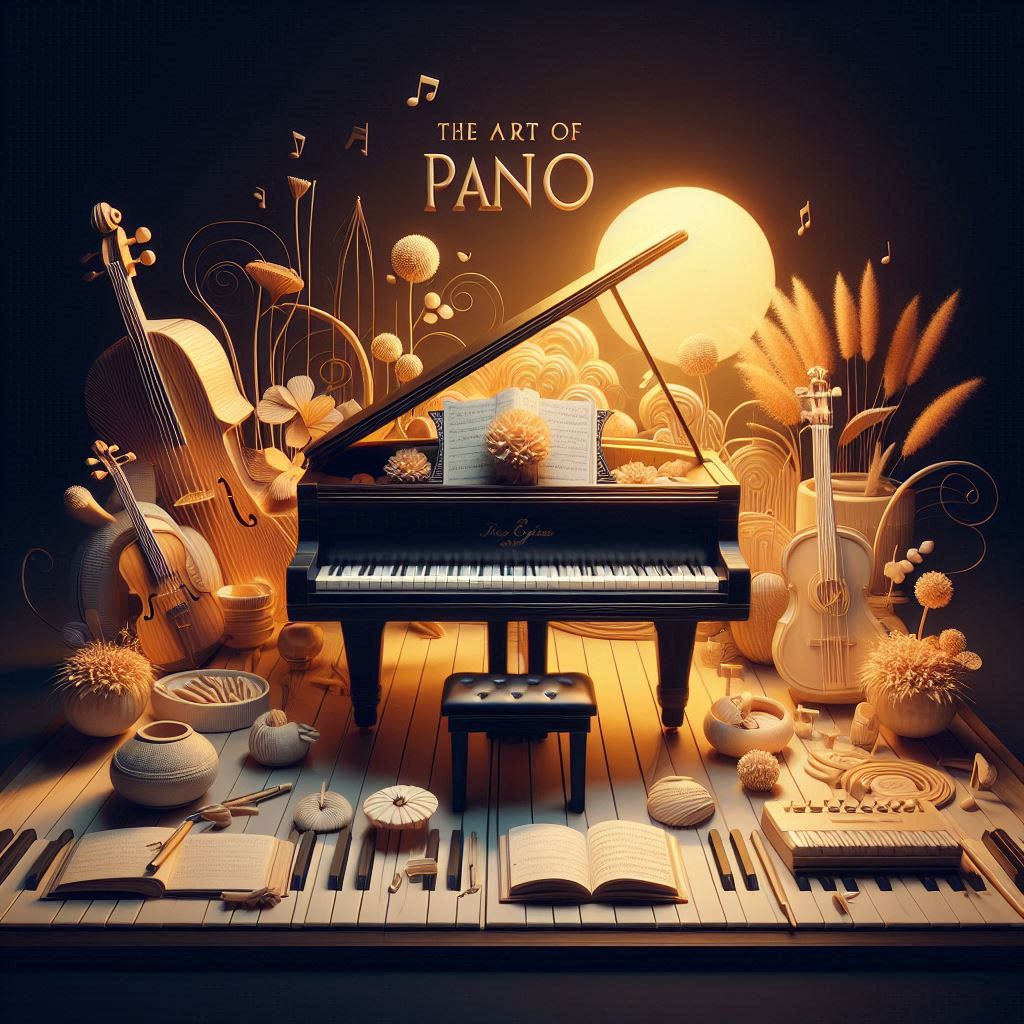Introduction
Harmony is a fundamental element of music that enriches and supports the melody, creating a fuller and more complex sound. In piano music, harmony plays a crucial role in shaping the overall composition, influencing its emotional impact, and providing depth to performances. This article will explore the role of harmony in piano music, discussing its various aspects and how it enhances the musical experience.
Understanding Harmony
What is Harmony?
Harmony refers to the combination of different musical notes played or sung simultaneously. It involves the construction of chords and the progression of these chords throughout a piece of music.
Basic Elements of Harmony
The basic elements of harmony include chords, intervals, and chord progressions. These elements work together to create a rich tapestry of sound that complements the melody.
Historical Perspective
Harmony in Classical Music
In classical music, harmony is often structured and follows specific rules. Composers like Bach, Beethoven, and Mozart used harmony to create intricate and emotionally compelling compositions.
Evolution in Contemporary Music
In contemporary music, harmony has evolved to include a wider range of chord structures and progressions. Modern composers and musicians often experiment with dissonance and unconventional harmonies to create unique sounds.
Types of Harmony
Consonant Harmony
Consonant harmony consists of chords and intervals that sound pleasant and stable. These harmonies are often used to create a sense of resolution and peace in a piece of music.
Dissonant Harmony
Dissonant harmony includes chords and intervals that create tension and a sense of instability. These harmonies can evoke strong emotions and are often used to build suspense or express complex feelings.
Role of Harmony in Piano Music
Enhancing Melody
Harmony enriches the melody by adding depth and complexity. It supports the main tune and provides a fuller sound that makes the music more engaging.
Creating Emotional Impact
Different harmonies can evoke various emotions. For example, major chords often sound happy and uplifting, while minor chords can create a somber or melancholic mood. Dissonant harmonies can evoke tension or unease, adding emotional depth to the music.
Providing Structure
Harmony provides a framework for the music. Chord progressions guide the listener through the piece, creating a sense of movement and direction.
Techniques for Incorporating Harmony
Voice Leading
Voice leading involves the smooth movement of individual notes from one chord to the next. Good voice leading ensures that the transition between chords is smooth and pleasing to the ear.
Chord Inversions
Chord inversions involve rearranging the notes of a chord so that different notes are the lowest in pitch. This technique can add variety and interest to the harmony.
Harmonic Rhythm
Harmonic rhythm refers to the rate at which chords change in a piece of music. Varying the harmonic rhythm can create different effects, from calm and steady to fast-paced and dynamic.
Harmony in Different Genres
Classical Piano Music
In classical piano music, harmony is often complex and follows traditional rules of composition. Composers use harmony to create intricate textures and emotional depth.
Jazz Piano Music
Jazz piano music features rich and varied harmonies, often using extended chords and improvisation. Jazz musicians frequently experiment with harmony to create unique sounds and express individuality.
Pop and Rock Piano Music
In pop and rock piano music, harmony tends to be more straightforward but is still crucial for creating the song’s overall feel. Chord progressions in these genres are often catchy and memorable, providing a solid foundation for the melody and lyrics.
Theoretical Concepts
Functional Harmony
Functional harmony is a theory that explains how chords function and relate to each other within a key. Understanding functional harmony helps musicians create logical and coherent chord progressions.
Modal Harmony
Modal harmony uses modes rather than traditional major and minor scales. This approach can create unique sounds and is often used in jazz and contemporary music.
Practical Applications
Analyzing Scores
Studying and analyzing musical scores helps pianists understand how harmony is used in different pieces. This knowledge can inform their own playing and composition.
Improvisation
Improvisation involves creating music spontaneously, often relying heavily on harmony. Understanding harmonic principles allows pianists to improvise more effectively and creatively.
Composition
For those who compose their own music, a solid grasp of harmony is essential. It provides the tools needed to create interesting and emotionally compelling pieces.
FAQs
What is the role of harmony in piano music? Harmony enriches the melody, adds emotional depth, and provides structure to a piece of music. It complements the main tune and creates a fuller sound.
How does harmony affect the emotional impact of music? Different harmonies can evoke various emotions, such as happiness, sadness, tension, or peace. Composers use harmony to enhance the emotional expression of their music.
What are consonant and dissonant harmonies? Consonant harmonies sound pleasant and stable, while dissonant harmonies create tension and a sense of instability. Both types of harmony are used to evoke different emotions.
How can I improve my understanding of harmony? Study musical scores, practice voice leading and chord inversions, and analyze how harmony is used in different pieces. Learning functional and modal harmony can also be beneficial.
Why is voice leading important in harmony? Voice leading ensures smooth transitions between chords, making the music sound cohesive and pleasing to the ear.
How is harmony used differently in various genres of piano music? Classical music often features complex harmonies, jazz uses rich and varied harmonies with improvisation, and pop/rock music relies on catchy chord progressions.
Conclusion
Harmony is an essential component of piano music, providing depth, structure, and emotional expression. By understanding and incorporating harmony into their playing, pianists can enhance their performances and create more compelling music. Whether you are a performer, composer, or enthusiast, exploring the role of harmony will enrich your musical journey.



